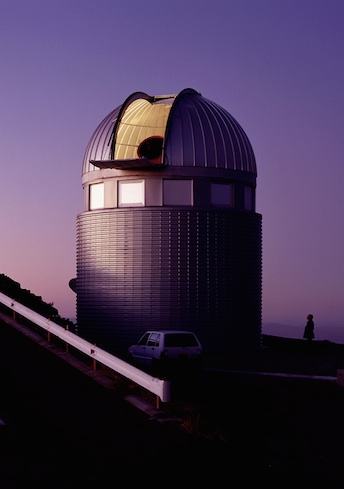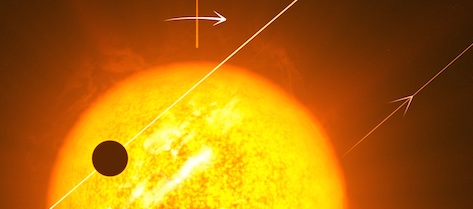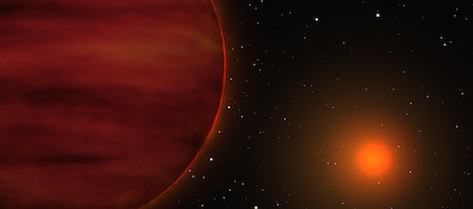
We find hot jupiters transiting bright stars
WASP consists of two instruments, made of eight 11cm refractive telescopes, located in South Africa and on La Palma.
Each night WASP monitors almost 10% of the sky, searching for periodic luminosity drops, compatible with a planet eclipsing them.
More than 30 million stars have been observed, tens of thousands of times each, leading to the discovery of over 130 planets.
Our planets are particularly suited for follow-up observations. Their
My role is to verify which of WASP's signals are truly produced by transiting planets.
This verification is done using the 1.2m Euler telescope, owned and operated by the Observatoire de Genève, at La Silla, Chile.
A planet orbiting a star will pull it a little, thus making it move. Thanks to the Doppler effect we can measure this slight change in the velocity of the star, caused by the planet.
Euler is fitted with the spectrograph CORALIE, which can measure the velocity of a star to an accuracy of roughly 5 m/s.
From the flux drop, we estimate the radius of the planet; from Euler, we get the mass. Combining both we obtain the density of our planets. This value will determine which of our planets are amenable for

A transit
is when a planet passes in front of its host star. It casts a shadow, which we detect as a flux drop. A planet the size of Jupiter, transiting a star the size of the Sun produces a signal of about 1%.
For a 3 day orbital period, and if that planet has the same mass as Jupiter, it will typically produce a Doppler signal of 100 m/s.
A hot Jupiter
is a planet with a mass comparable to that of Jupiter. However instead of orbiting in 11 years, its orbit is typically shorter than 10 days. The first exoplanet detected, 51 Peg b was a hot Jupiter. The reason why they are found so close to their star is the scene of active research.
False positives
are astrophysical objects that mimic the signal we are searching for. In the case of WASP, some signals are caused by double stars, which, eclipsing, produce similar brightness drops to planets. Notably, stars with masses below 0.2% the mass of the Sun, have sizes and temperatures comparable to hot Jupiters.
some highlights of my work with WASP
Often discoveries inspire new observing programmes. Some of the projects below are offshoots resulting from the intense work done in collaboration with WASP and Geneva.

120+ planets
I am managing the verification of WASP candidates since 2008. In that time, I confirmed more than 120 new transiting planets, estimated their masses, constrained their eccentricities.

the first retrograde planets
With dozens of planets at my disposition, I could select the most optimal to
observe the Rossiter-McLaughlin effect and measure the inclination of their orbital planes
with respect to the stellar equator. More on this

The brown dwarf desert
During our planet harvesting, we also pick up eclipsing binary stars and transiting brown dwarfs.
These provide a confirmation of the brown dwarf desert (

Low mass eclipsing binaries
The mass-radius relation for stars less than 0.2% the mass of the Sun is largely untested, yet dearly needed for
projects such as